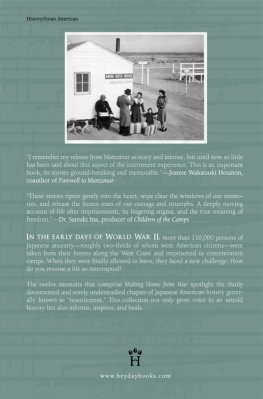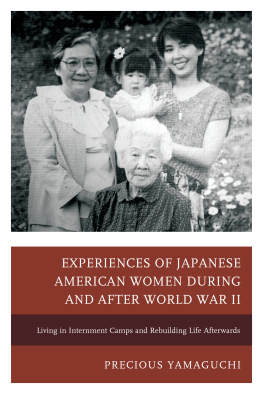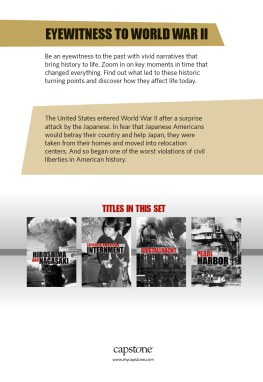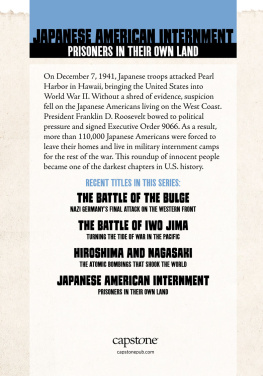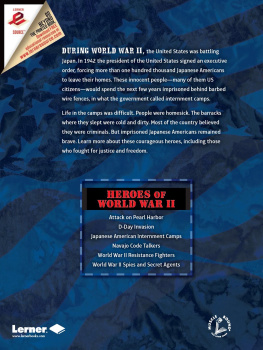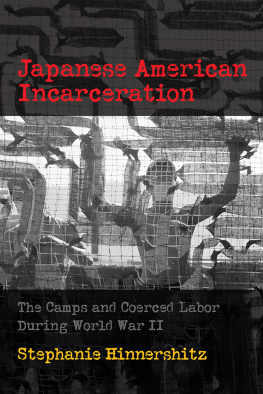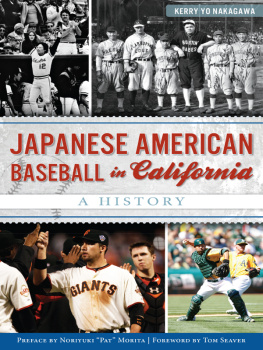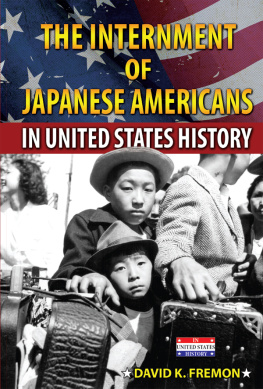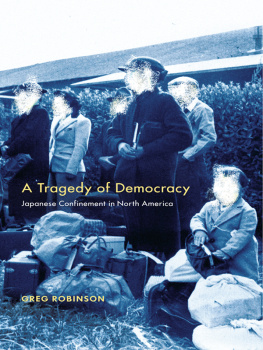MAKING HOME
FROM WAR
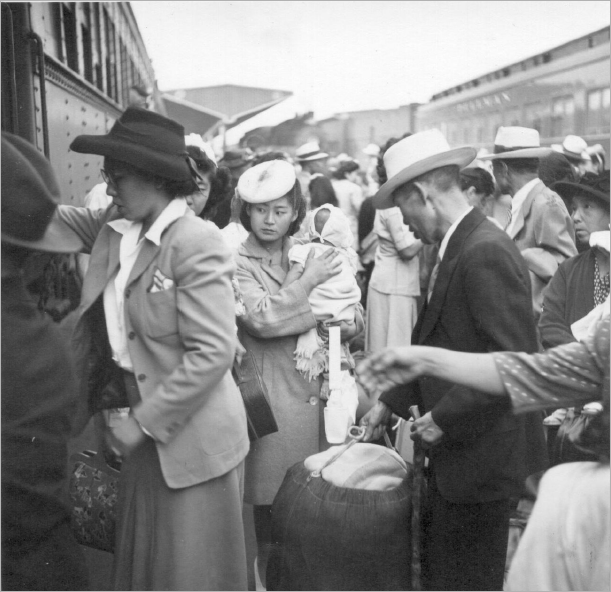

For those whose stories weve lost and for those with stories yet untold.
This book was made possible in part by a generous grant from the California State LibraryCalifornia Civil Liberties Public Education Program.
2011 by the Japanese Cultural and Community Center of Northern California
Individual selections are 2011 to their authors or their authors estates
Foreword 2011 by Greg Robinson
All rights reserved. No portion of this work may be reproduced or transmitted in any form or by any means, electronic or mechanical, including photocopying and recording, or by any information storage or retrieval system, without permission in writing from Heyday.
Library of Congress Cataloging-in-Publication Data
Front cover photo, back cover photo, and frontispiece all from the War Relocation Authority Photographs of Japanese-American Evacuation and Resettlement collection, courtesy of The Bancroft Library, University of California, Berkeley.
Front cover photo: Mrs. Saku Moriwaki and her two-year-old daughter, Suga Ann, were the first Japanese American family to leave the Central Utah Relocation Center for California. Photo by Charles E. Mace, Topaz, Utah, January 3, 1945. WRA no. H-591.
Back cover photo: Mrs. Saku Moriwaki and her daughter, Suga Ann, are bid goodbye at the Topaz camp gate by her sister, Miss Suga Baba, and a Caucasian staff member. Mrs. Moriwaki, formerly of Berkeley, had accepted a position in the home of Mrs. R. A. Isenberg in Palo Alto. WRA no. -592.
Frontispiece: Roaring into Sacramento on July 30, 1945, a special train of seven cars brought 450 Japanese American residents back to their home state of California after three years of incarceration at the Rohwer War Relocation Center in McGehee, Arkansas. Photo by Hikaru Iwasaki. WRA no. -47.
Book Design: Lorraine Rath
Orders, inquiries, and correspondence should be addressed to:
Heyday
P.O. Box 9145, Berkeley, CA 94709
(510) 549-3564, Fax (510) 549-1889
www.heydaybooks.com

Our imprisonment during World War II has been documented by those rare filmmakers, authors, and skilled artists and poets whom those of us within this community have all come to know and love. Our project, now this book, provides a vehicle for the common folk to offer personal insights and to record their individual histories during and after that catastrophic mistake in American history that most of us are reluctant to discuss or fully acknowledge today. Our recollections give each story a face and a voice and add to our Asian American legacy.
Surviving the injustice, the prejudice, and the hardships during resettlement speaks volumes about the spirit that has led us to stand tall, to embrace our contributions that have made our country what it is today. Most of us, however, have remained silent, and now over half of us are not here to reveal our secrets of bouncing back from nothingness.
The following stories can inspire those who sit in waiting to tell their version of history and can aid them in the healing process. Our story is an American story, a portrait of others mistakes, and our struggles to endure and overcome.
Toru Saito
Public comment before the California State Librarys California Civil Liberties Public Education Program in 2007
FOREWORD
By Greg Robinson
World War II completely reshaped ethnic Japanese communities in the continental United States. During Spring 1942, army commandersurged on by white nativists and by agricultural interest groups anxious to get rid of their economic competitors, as well as by opportunistic politiciansrounded up the entire population of Japanese ancestry on the nations Pacific coast. Some 112,000 people, American citizens and longtime residents alike, were deprived of liberty without charge or due process, and on the basis of a blanket (and largely fictitious) claim of military necessity. In the process, they were forced to leave behind or dispose of the bulk of their property. They then were squeezed together into a network of so-called Assembly Centers, which were holding areas established under military rule in abandoned fairgrounds and racetracks. There they languished in hastily converted horse stalls and animal pens and were plagued by poor food and medical care, forced inactivity, and deprivation of basic liberties. After several months, military authorities transported the Japanese Americans to long-term confinement in Relocation Centers, ten large-scale camps constructed in desolate areas of the Western states and Arkansas and managed by a new civilian agency, the War Relocation Authority (WRA). In these spartan camps, the inmates were housed in wood and tarpaper shacks, surrounded by barbed wire and military guards. The inmates worked hard, with help from some sympathetic administrators, to make the best of things for themselves within the camps, operating schools and cooperative stores and newspapers, among other activities. Still, the trauma of imprisonment, coupled with the harsh conditions, bred widespread discontent and sparked episodes of militant protest.
Most Japanese Americans remained confined in the camps throughout the war, even after their individual loyalty had been thoroughly examined and the War Department and the White House had privately agreed that there was no conceivable military necessity for their continued confinement. Although approximately one-fourth of the confined Issei and Nisei (first- and second-generation Japanese Americans, respectively) were able to gain official permission to leave the camps under a parole system and to resettle in the East and Midwest during 1943 and 1944, West Coast military commanders, seconded by antiJapanese American politicians, still refused to reopen the excluded zone to people of Japanese ancestry. The restrictions remained in force until the end of 1944, when the Supreme Court ruled in the case of Ex parte Endo that the government had no authority to hold a concededly loyal citizen without charge. In response, the army lifted its West Coast exclusion orders in January 1945.
Once free to return to the Pacific Coast, most inmates from the camps began to migrate back. Resettlement east of the Rockies continued at a slower pace, but the Japanese populations of the Midwest and East Coast soon began to decline as those who had moved there from camp decided to return to their home regions in the West. In hopes of averting violent backlash from white racists, the WRA used various administrative devices to slow the flow of resettlers. Among their tactics, WRA officials automatically provided financial aid to all inmates settling outside the West Coast while demanding that any inmates wishing assistance to return to their prewar home regions submit detailed relocation plans, which the WRA then deliberately took extra time to process. Nevertheless, by the end of 1946, the majority of the mainland ethnic Japanese population was once again on the Pacific Coast, although significant pockets of Japanese American settlement remained in other parts of the country.
The resettlers, already psychologically scarred by their confinement, attempted to rebuild their lives under difficult and trying circumstances. At first, despite the overall wartime economic boom, they faced widespread hardship. During the prewar years, Japanese Americans had been largely self-employed, most often as small shopkeepers or in agriculture, but they had been forced to give up their shops and the land they owned or leased at the time of removal, and most were not able to resume their former occupations once they returned. Instead, they were forced to move into urban areas and take whatever jobs they could get. This often meant that even those with high educational or professional experience were forced to take low-status jobs, sometimes involving menial labor. The majority were relegated to working for white families as gardeners or servants.

